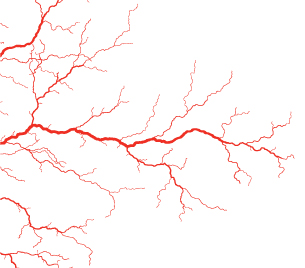Module 8 Intro
1. Module 8 Intro
1.25. Lesson 4 Intro
Module 8—Circulation, Immunity, and Excretion
Lesson 4—Circulation

© Peter Wey/shutterstock
 Get Focused
Get Focused
In a water treatment plant, pipes become smaller as you work through the filtration process. In the circulatory system, the smallest pipes are capillaries. Fluids move through blood vessels (as with any kind of pipe) when there is a pressure difference between the start and end of the pipe.
Just as water moves continuously as a river flows downhill, the pressure drops continuously from the start to the end of a vessel. How does this affect the transportation of nutrients to all cells of the body?

© Andrea Danti/shutterstock

© Robert Adrian Hillman/shutterstock
In this lesson you will explore the following essential question:
- At the capillary level, how does the circulatory system aid the digestive, excretory, respiratory, and motor systems’ exchange of matter with the environment?
 Module 8: Lesson 4 Assignment
Module 8: Lesson 4 Assignment
Your teacher-marked Module 8: Lesson 4 Assignment requires you to submit a response to the following:
- TR 1. Capillary Fluid Exchange
You can access your Module 8: Lesson 4 Assignment. You can print off the assignment or save the download to your computer. Your answers can be saved on this document to your course folder.
You must decide what to do with the questions that are not marked by the teacher.
Remember that these questions provide you with the practice and feedback that you need to successfully complete this course. You should respond to all the questions and place those answers in your course folder.